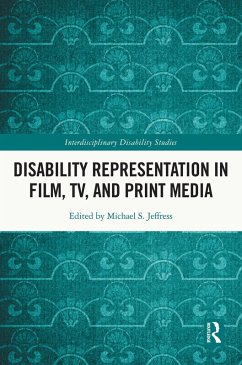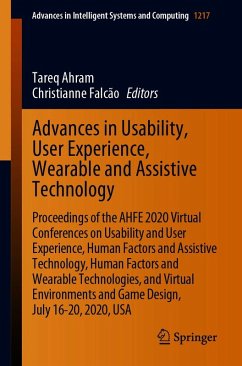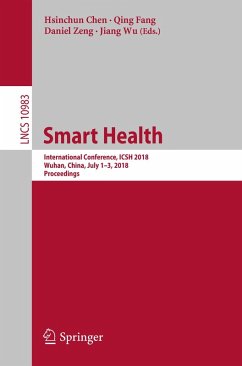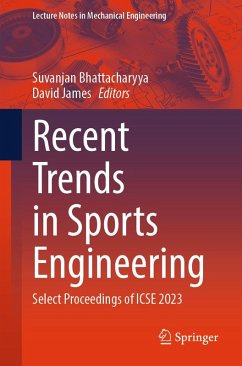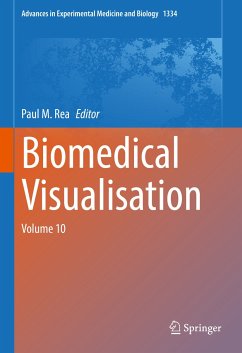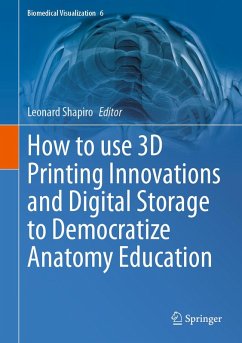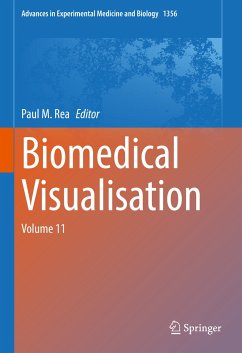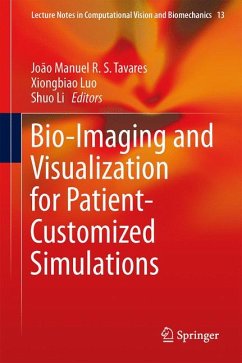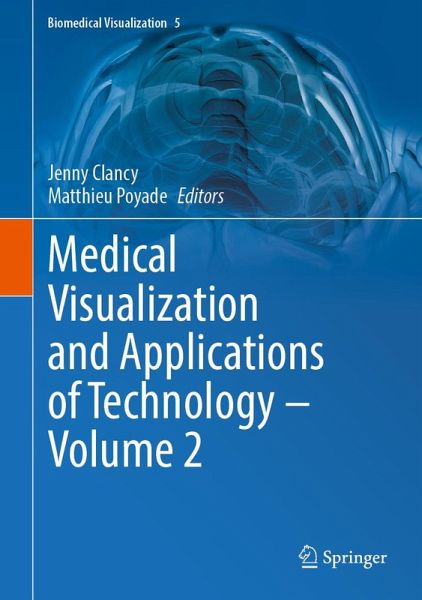
Medical Visualization and Applications of Technology ¿ Volume 2 (eBook, PDF)
Versandkostenfrei!
Sofort per Download lieferbar
144,95 €
inkl. MwSt.
Weitere Ausgaben:

PAYBACK Punkte
72 °P sammeln!
This edited volume encompasses chapters on novel and innovative research in the applications of leading digital technologies in an accessible and engaging way. By utilising cutting edge and ever progressive technology in visualization, it will enhance our understanding and application in our everyday lives.This volume shows how we can use Extended Reality, 3D animations and serious games to benefit the learner, educator, clinician, patient, parent and carer. Visualization techniques like Virtual, Augmented and Mixed Reality and show how they can be utilised to improve training and understandin...
This edited volume encompasses chapters on novel and innovative research in the applications of leading digital technologies in an accessible and engaging way. By utilising cutting edge and ever progressive technology in visualization, it will enhance our understanding and application in our everyday lives.
This volume shows how we can use Extended Reality, 3D animations and serious games to benefit the learner, educator, clinician, patient, parent and carer. Visualization techniques like Virtual, Augmented and Mixed Reality and show how they can be utilised to improve training and understanding of anatomy, surgery, and clinical assessment. This is covered specifically for emergency practitioners in enhancing their understanding of ECG's for potential myocardial infarction by using augmented reality. From a translational medicine perspective and pre-operative pediatric surgical planning, the benefits of augmented reality are examined as to what might be found intra-operatively from imaging techniques.
Educational applications of digital technologies using serious games and Extended Reality are examined. We show how Mixed Reality can aid understanding in cellular anatomy for our learners and researchers alike. We also show how serious games can have applications in diverse areas like parasite infections and neuroanatomy education and training.
Finally, from a clinical perspective, the use of 3D animations and their applications is discussed for vertebral fractures and increasing parent/carer awareness through interactive applications. Also, the use of 3D animations in cerebral magnetic resonance angiography for global education highlights the great benefits of these tools and technologies.
There is something for the researcher, clinician, educator, patient, and carer as we explore novel technologies. These are applied locally, nationally and globally as we advance our understanding of the world changing influence that digital technologies have on our day-to-day life.
This volume shows how we can use Extended Reality, 3D animations and serious games to benefit the learner, educator, clinician, patient, parent and carer. Visualization techniques like Virtual, Augmented and Mixed Reality and show how they can be utilised to improve training and understanding of anatomy, surgery, and clinical assessment. This is covered specifically for emergency practitioners in enhancing their understanding of ECG's for potential myocardial infarction by using augmented reality. From a translational medicine perspective and pre-operative pediatric surgical planning, the benefits of augmented reality are examined as to what might be found intra-operatively from imaging techniques.
Educational applications of digital technologies using serious games and Extended Reality are examined. We show how Mixed Reality can aid understanding in cellular anatomy for our learners and researchers alike. We also show how serious games can have applications in diverse areas like parasite infections and neuroanatomy education and training.
Finally, from a clinical perspective, the use of 3D animations and their applications is discussed for vertebral fractures and increasing parent/carer awareness through interactive applications. Also, the use of 3D animations in cerebral magnetic resonance angiography for global education highlights the great benefits of these tools and technologies.
There is something for the researcher, clinician, educator, patient, and carer as we explore novel technologies. These are applied locally, nationally and globally as we advance our understanding of the world changing influence that digital technologies have on our day-to-day life.
Dieser Download kann aus rechtlichen Gründen nur mit Rechnungsadresse in A, B, BG, CY, CZ, D, DK, EW, E, FIN, F, GR, HR, H, IRL, I, LT, L, LR, M, NL, PL, P, R, S, SLO, SK ausgeliefert werden.



